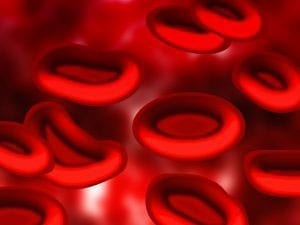Glanzmann’s Thrombasthenia
What is Glanzmann’s thrombasthenia?
Glanzmann’s thrombasthenia is an inherited bleeding disorder where the blood is unable to clot properly. It is marked by prolonged bleeding at birth. It effects both men and women and about one in one million people globally.
What are the symptoms of Glanzmann’s thrombasthenia?
Glanzmann’s thrombasthenia symptoms are:
- Bleeding from the nose and gums
- Heavy periods or bleeding after child birth (women)
- Red or purple spots on the skin
- Profuse bleeding after surgery or dental work
- Rarely blood in the urine
What causes Glanzmann’s thrombasthenia?
Glanzmann’s thrombasathenia is an autosomal recessive genetic disorder, meaning both parents must carry the gene to pass it on to the child.
How is Glanzmann’s thrombasthenia diagnosed?
A Glanzmann’s thrombastenia diagnosis is reached by the following tests, likely administered by a hemophilia specialist:
- The bleeding time test (bleeding takes longer than normal to stop)
- The closure time test
- Platelet aggregation test
- Flow cytometry
- Genetic testing
What treatments are available for Glanzmann’s thrombasthenia?
Glanzmann’s thrombasthenia treatments include:
- Blood platelet transfusions
- NovoSeven RT by Novo Nordisk
- Hormonal therapy
- Genetic counseling
- Iron replacement
- Antifibrinolytic drugs
- Recombinant factor VIIa
- Fibrin sealants
Where can I find out more about Glanzmann’s thrombasthenia?
Glanzmann's Thrombasthenia Articles

EAHAD 2024: Positive Clinical Data on HMB-001 for Glanzmann Thrombasthenia
Jessica Lynn
February 26, 2024
Read More »



March is Bleeding Disorders Awareness Month: Spreading Bleeding Disorders Awareness
James Moore
March 16, 2021
Read More »

The Glanzmann’s Research Foundation: Dedicated to Finding a Cure
James Moore
October 15, 2020
Read More »



March is Bleeding Disorders Awareness Month: A Primer on Platelet Disorders
Jean Martell
March 23, 2017
Read More »






